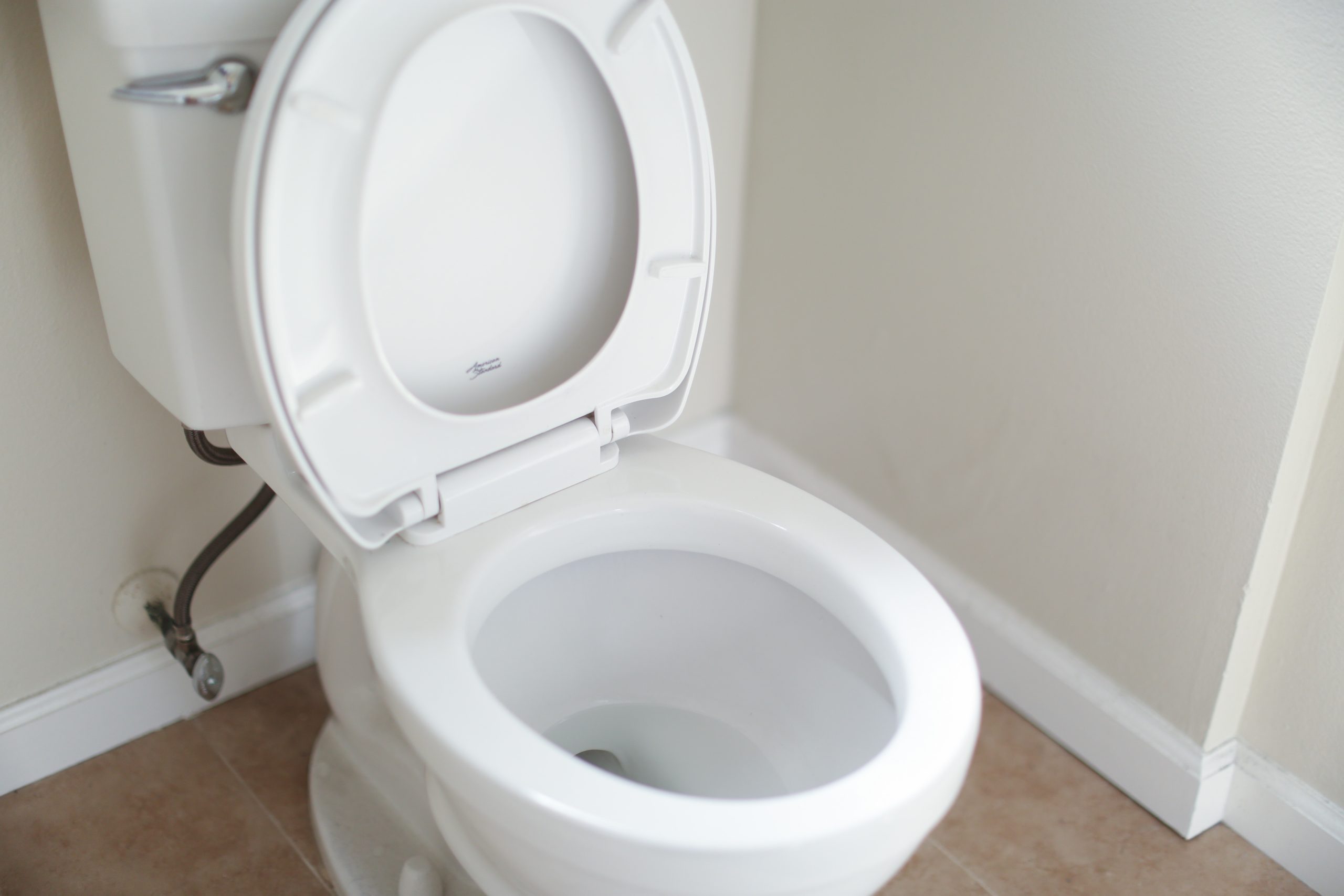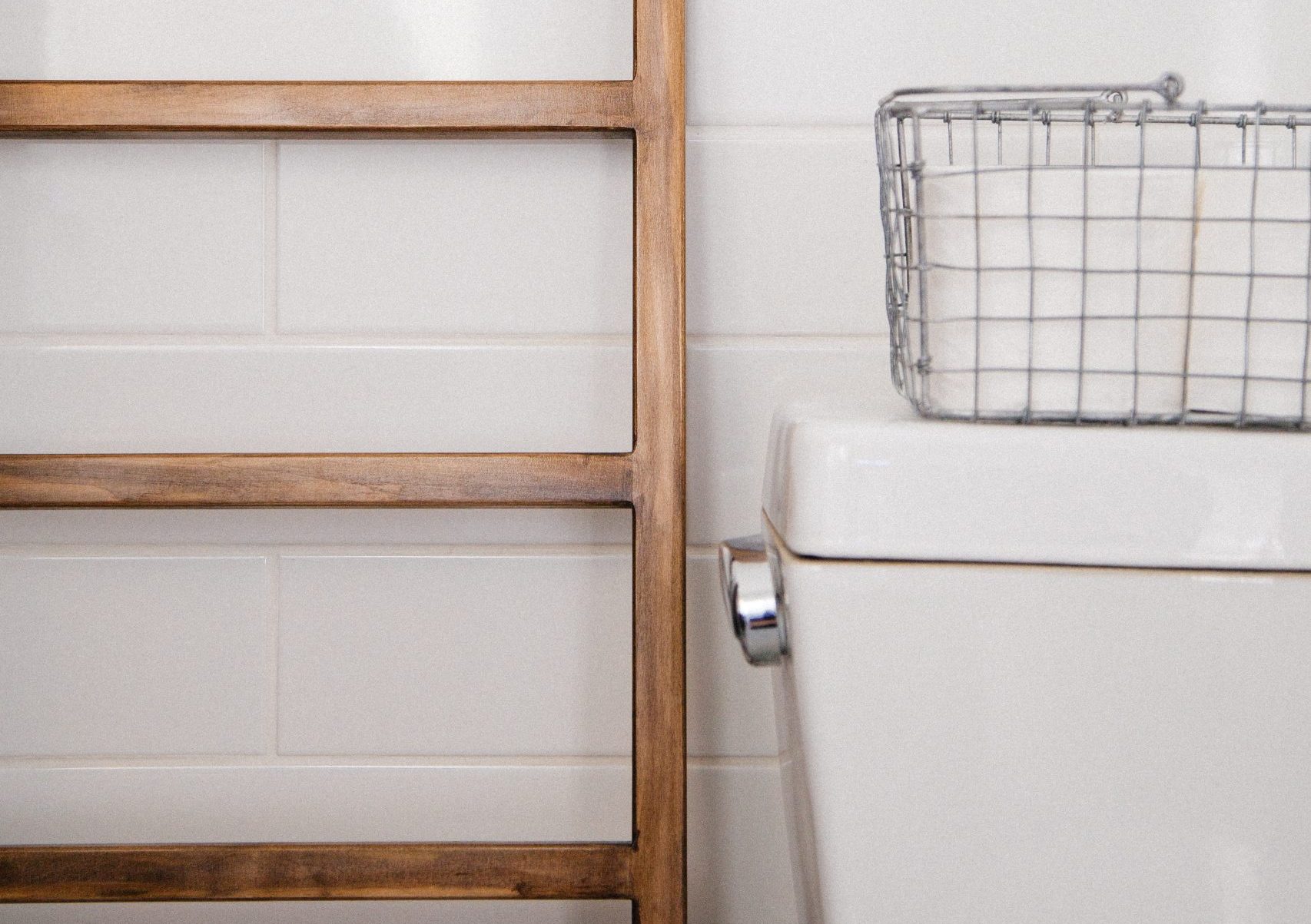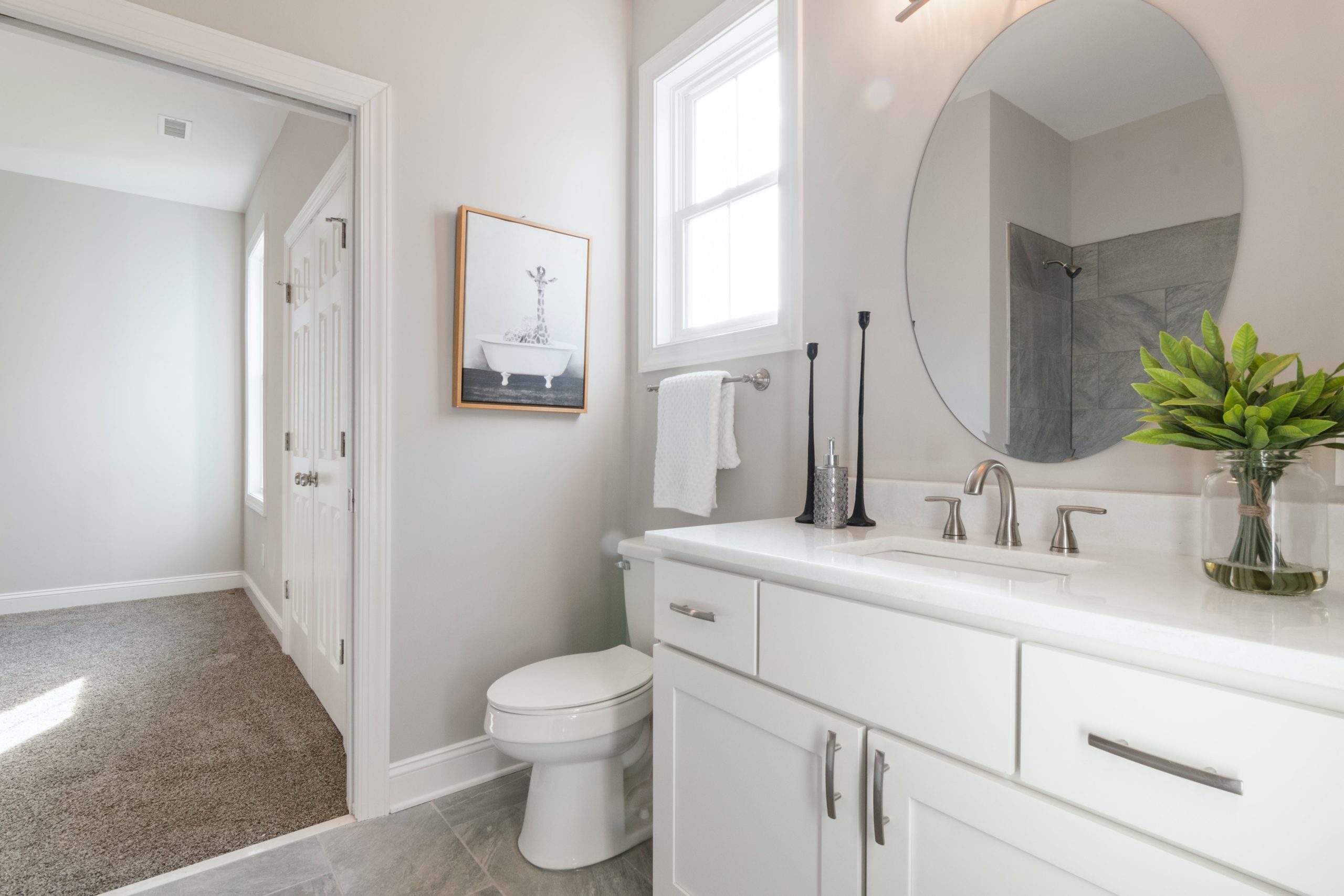A malfunctioning toilet is more than just an inconvenience – it disrupts the daily rhythm of your household. Whether it’s an unexpected clog, a persistent running sound, or a mysterious leak, common toilet problems can create headaches for homeowners. Fortunately, understanding how to identify and fix these issues can save you time, money, and the frustration of a bathroom in disarray.
At Service by Scott, we recognize the importance of a smoothly functioning toilet in maintaining the comfort and functionality of your home. With over 30 years of experience serving Woodville, Texas, and its neighboring communities, we’ve encountered and successfully resolved many toilet-related challenges. In this comprehensive guide, we’ll walk you through the steps to troubleshoot and address the most prevalent toilet problems, empowering you to regain control over your bathroom.
Join us as we delve into the intricacies of toilet maintenance, providing you with practical tips and solutions to keep your plumbing in top-notch condition. From DIY fixes to recognizing when it’s time to call in the experts, Service by Scott is your trusted partner in achieving a reliable and efficient toilet system. Let’s embark on this journey of troubleshooting toilets together, ensuring your bathroom remains a sanctuary of convenience and functionality.

Clogging Woes
Clogs are the arch-nemesis of any household, causing frustration and inconvenience. The first sign of a clogged toilet often manifests when you flush and the water level rises ominously close to the rim, refusing to drain. But fear not – many clogs can be addressed with a few simple steps. In this section, we’ll explore the common culprits behind clogs, provide practical tips for identifying them, and guide you through the process of resolving these clogging woes.
Signs of a Clogged Toilet
The first indication of a clogged toilet is often a slow or weak flush. If you notice water rising unusually high in the bowl or a gurgling sound, it’s time to investigate. A persistently clogged toilet can lead to backups and potential water damage, making early detection crucial.
DIY Unclogging Methods
Before reaching for the plunger, try using a combination of hot water and dish soap. Pouring hot water and a small amount of soap into the bowl can help break down mild clogs. For more stubborn blockages, a plunger is your go-to tool. Ensure a proper seal around the drain, then use firm, consistent plunging motions to dislodge the obstruction.
When to Call a Professional Plumber
If your DIY efforts prove unsuccessful or if you’re facing frequent clogs, it’s time to enlist the expertise of a professional plumber. Service by Scott is equipped with the experience and tools to handle even the most stubborn clogs. Our team can perform a thorough inspection to identify the root cause and implement effective solutions to prevent future issues.
Preventive Measures to Avoid Future Clogs
Preventing toilet clogs is as important as addressing existing ones. Educate household members about proper flushing habits, avoiding excessive toilet paper use, and refraining from flushing non-flushable items. Additionally, consider regular maintenance services from Service by Scott to catch potential clogs before they become major disruptions. Taking these proactive steps ensures a smoothly flowing toilet and minimizes the risk of unexpected clogging woes.
Running Toilets: Causes and Solutions
A running toilet is not only a source of irritation but can also lead to wasted water and increased utility bills. Understanding the causes behind this common issue is crucial for effective resolution. In this section, we’ll explore the various reasons toilets may run incessantly and provide practical solutions to restore your toilet to its efficient, water-saving state.
Reasons behind a Running Toilet
A running toilet can be attributed to several factors. One common culprit is a faulty flapper that doesn’t create a proper seal, allowing water to continuously leak from the tank to the bowl. Another potential cause is a malfunctioning fill valve, leading to an improper water level in the tank. Additionally, sediment buildup in the tank or a misadjusted float can contribute to the perpetual running cycle.
To identify the root cause, begin with a simple observation. Lift the toilet tank lid and inspect the flapper, fill valve, and float. Listen for any hissing or running water sounds that persist after a flush. Understanding these signs will guide you toward the specific issue affecting your toilet.
Adjusting the Flush Valve and Flapper
If the flapper isn’t sealing properly, adjusting or replacing it may solve the problem. Ensure the flapper chain has enough slack to allow for a complete seal after each flush. If necessary, clean the flapper to remove any debris that might hinder its function. Adjusting the flush valve height can also help achieve the correct water level, preventing unnecessary running.
Checking and Replacing Faulty Fill Valves
A malfunctioning fill valve is a common culprit for persistent running. To address this, start by adjusting the water level in the tank. If the problem persists, consider replacing the fill valve with a new, efficient model. Service by Scott can assist in identifying and installing the right fill valve for your toilet, ensuring a proper balance between water conservation and functionality.
Leaky Tanks and Bowls
A leaky toilet not only poses an inconvenience but can also lead to water wastage and potential damage to your bathroom flooring. In this section, we’ll delve into the troublesome realm of leaky tanks and bowls, exploring common causes behind these leaks and providing actionable solutions to keep your toilet operating seamlessly.
Detecting Tank and Bowl Leaks
Detecting leaks early is crucial in preventing water damage and addressing the issue promptly. A leaky toilet tank may exhibit visible water pooling around the base, while a leaky bowl can lead to constant dampness on the floor. Another telltale sign is the sound of water running even when the toilet is not in use. Performing a visual and auditory inspection can help identify the source of the leak.
Fixing a Leaking Tank with New Parts
Leaky toilet tanks often result from worn-out or damaged components. The flapper, flush valve, or tank bolts may be the culprits. Start by inspecting these parts for any signs of wear, corrosion, or misalignment. If the flapper is not sealing properly, consider replacing it with a new one. Similarly, inspect the flush valve for any damage or debris that might hinder its function. Service by Scott offers professional assistance in identifying and replacing faulty tank components, ensuring a watertight seal, and preventing further leaks.
Sealing and Repairing Bowl Leaks
A leaking toilet bowl may be caused by a damaged wax ring, loose bolts, or cracks in the porcelain. Carefully inspect the base of the toilet for any visible cracks or gaps. Tighten loose bolts, and if the wax ring is compromised, it’s essential to replace it promptly. Service by Scott can expertly address bowl leaks, ensuring a thorough inspection and precise repairs to restore your toilet to optimal functioning. Remember, timely intervention is key to preventing water damage and maintaining the longevity of your bathroom fixtures.

Issues with Flushing Mechanism
A smoothly operating flushing mechanism is essential for the proper functioning of your toilet. When faced with issues in this critical component, it can lead to incomplete flushes, weak flushing power, or even persistent running water. In this section, we’ll explore common problems associated with the flushing mechanism and provide practical solutions to ensure your toilet flushes efficiently.
Identifying Flushing Problems
Recognizing issues with the flushing mechanism is crucial for effective troubleshooting. If you notice weak flushes, incomplete flush cycles, or the need to hold down the flush handle for an extended period, it’s an indication that your flushing mechanism requires attention. The first step is understanding the potential causes behind these problems.
Adjusting or Replacing the Flush Handle
A malfunctioning flush handle is often the culprit behind flushing issues. If the handle is loose or unresponsive, adjusting or replacing it may resolve the problem. Ensure that the chain connecting the flush handle to the flapper is properly connected and has the right amount of slack. If the handle itself is damaged or doesn’t spring back into position, a replacement is advisable. Service by Scott can assist in identifying the right handle for your toilet model and ensuring a seamless installation.
Fixing a Weak or Incomplete Flush
A weak or incomplete flush may be attributed to a variety of factors, including a faulty flapper, an insufficient water level in the tank, or an issue with the flush valve. Inspect the flapper for any signs of wear or misalignment and adjust or replace it as needed. Check the water level in the tank to ensure it reaches the appropriate height, and if the problem persists, consider upgrading to a dual-flush system for improved water efficiency. Service by Scott specializes in diagnosing and addressing flushing mechanism issues, providing tailored solutions to restore the power and effectiveness of your toilet flush.
Strange Sounds: Gurgling and Whistling
Strange sounds emanating from your toilet can be both perplexing and disruptive. Gurgling noises, reminiscent of a mischievous creature lurking in the pipes, or whistling sounds that mimic an unseen wind, can indicate underlying issues. In this section, we’ll explore the common causes of these peculiar sounds and guide you through the steps to eliminate them, restoring your bathroom to a state of peaceful functionality.
Common Reasons for Gurgling Sounds
Gurgling sounds often indicate a problem with the venting system or air circulation in your plumbing. This could be due to a clogged vent pipe, which disrupts the smooth flow of air during flushing. Another culprit might be a partially blocked drain, creating air pockets that result in the distinctive gurgling noise. Identifying the source is the first step in resolving this auditory mystery.
Addressing Whistling Noises
Whistling sounds, akin to an unwelcome melody, can be attributed to various factors. One common cause is a malfunctioning or improperly adjusted fill valve. The whistling may occur when water passes through a restricted orifice, creating turbulence. Additionally, issues with the ballcock assembly or a faulty flapper can contribute to whistling sounds during and after flushing. Timely intervention is crucial to silence these unexpected bathroom symphonies.
Resolving Air Vent Issues
A well-functioning venting system is integral to maintaining proper air pressure in your plumbing. If gurgling persists, inspect the vent pipe for blockages or debris. Clearing obstructions ensures a smooth flow of air, preventing gurgling sounds. Whistling, on the other hand, may require adjustments or replacements of specific components.
Service by Scott has the expertise to diagnose and resolve these auditory anomalies, ensuring your toilet operates silently and efficiently. Regular maintenance, including vent system checks, can prevent the recurrence of these strange sounds, preserving the tranquility of your bathroom space.
Addressing Water Pressure Problems
A delicate balance of water pressure is essential for the efficient functioning of your toilet. Issues with water pressure, whether too high or too low, can lead to a range of problems, from incomplete flushes to potential damage within your plumbing system. In this section, we’ll delve into the effects of low and high water pressure on toilets, guide you through the steps to adjust water pressure and explore solutions to ensure your toilet operates at its optimal capacity.
Effects of Low or High Water Pressure on Toilets
Low water pressure can result in weak flushes, slow tank refills, and difficulties in clearing waste effectively. On the other hand, high water pressure can lead to noisy operation, increased wear on toilet components, and a higher likelihood of leaks. Understanding the impact of water pressure on your toilet is crucial in determining the appropriate adjustments needed for a balanced and effective flush.
Adjusting Water Pressure at the Valve
Adjusting water pressure at the valve is a fundamental step in resolving water pressure problems. Locate the shut-off valve connected to the water supply line leading to your toilet. Slowly turn the valve clockwise to decrease pressure or counterclockwise to increase it. Finding the optimal balance ensures your toilet operates smoothly without unnecessary strain on its components.
Installing Pressure-Reducing Valves
For homeowners dealing with consistently high water pressure, installing pressure-reducing valves is a long-term solution. These valves regulate water pressure throughout your plumbing system, preventing potential damage to appliances and fixtures, including your toilet.
Service by Scott can assess your water pressure situation and expertly install pressure-reducing valves, ensuring a stable and safe water flow for your toilet and other plumbing fixtures. Regular monitoring of water pressure and prompt intervention can mitigate potential issues, preserving the longevity of your toilet and maintaining its optimal performance.

DIY Toilet Repair Tools and Safety Tips
Embarking on DIY toilet repairs can be a rewarding endeavor, saving you both time and money. However, it’s crucial to approach these tasks with the right tools, knowledge, and safety precautions. In this section, we’ll explore essential tools for at-home toilet repairs, highlight safety measures, and underscore the importance of knowing when to seek professional assistance from experts like Service by Scott.
Essential Tools for At-Home Toilet Repairs
- Plunger: A classic yet effective tool for clearing minor clogs. Ensure a proper seal over the drain to maximize plunging efficiency.
- Adjustable Wrench: Useful for tightening or loosening nuts and bolts during repairs. Ensure a snug fit to avoid damaging the toilet’s porcelain surface.
- Plumber’s Tape: Ideal for sealing threaded connections and preventing leaks. Apply plumber’s tape to threaded areas to ensure a watertight seal.
- Bucket and Towels: Essential for containing water during repairs. Have a bucket on hand to remove excess water from the tank or bowl, and use towels to keep the work area dry.
- Toilet Auger: For more stubborn clogs beyond the reach of a plunger, a toilet auger can be threaded into the drain to break up blockages.
Safety Precautions When Dealing with Toilet Issues
- Turn Off the Water: Before starting any repairs, turn off the water supply to the toilet. This prevents accidental flushing and minimizes the risk of water damage.
- Use Personal Protective Equipment (PPE): Wear gloves and safety glasses to protect yourself from any bacteria or cleaning agents you may encounter during the repair process.
- Ventilation: Ensure proper ventilation in the bathroom by opening windows or using an exhaust fan. This helps disperse any fumes from cleaning agents or chemicals.
- Know Your Limits: While DIY repairs are feasible for many common issues, it’s crucial to recognize when a problem surpasses your expertise. If you encounter a complex or persistent issue, it’s time to bring in the professionals.
The Importance of Hiring a Professional
Despite the accessibility of DIY resources, certain toilet issues require the expertise of a professional plumber. Complicated leaks, extensive pipe damage, or issues with the sewer line may be beyond the scope of DIY repairs. Service by Scott, with its decades of experience, has the knowledge and tools to tackle intricate problems efficiently. Hiring a professional ensures that repairs are done correctly, preventing further damage and potentially costly future repairs. Don’t hesitate to reach out to Service by Scott when faced with challenging toilet issues, guaranteeing a swift and effective resolution.
Conclusion
In the journey of troubleshooting toilets, we’ve explored the common issues that can disrupt the harmony of your bathroom and provided practical solutions to address them. From clogging woes to the delicate balancing act of water pressure, each section has empowered you with insights and DIY tips to keep your toilet in optimal condition.
Remember, a well-maintained toilet is not just a matter of convenience; it’s an essential component of a smoothly-running household. Regular inspections, proactive maintenance, and timely interventions can save you from unexpected disruptions and potential water damage.
However, when the challenges become complex, and DIY solutions reach their limits, it’s time to call in the experts. Service by Scott, with over 30 years of experience, stands ready to be your trusted partner in resolving intricate plumbing issues. Our dedicated team, equipped with the right tools and expertise, is just a call away.
Don’t let toilet troubles linger; contact Service by Scott today for reliable, professional assistance. Ensure your bathroom remains a haven of convenience and functionality, backed by our commitment to quality service and customer satisfaction. Experience the difference of three decades of plumbing expertise – because when it comes to your home, you deserve nothing but the best.
FAQs
How can I prevent toilet clogs?
Adopting proper flushing habits, using toilet paper in moderation, and avoiding flushing non-flushable items are key preventive measures. Regular use of enzyme-based cleaners can also help maintain clear drains.
What should I do if my toilet continues to run after flushing?
Check the flush handle and flapper for proper function. Adjust or replace the flush handle, and ensure the flapper creates a complete seal. If issues persist, consult a professional plumber to address more complex internal components.
Can I fix a leaking toilet myself?
For minor leaks, DIY solutions like adjusting or replacing the flapper, flush valve, or tank bolts may suffice. However, if leaks persist or are extensive, it’s advisable to seek professional assistance to identify and address the root cause.
Are there eco-friendly solutions for toilet issues?
Yes, consider upgrading to water-efficient components, such as dual-flush systems, to conserve water. Implementing environmentally friendly maintenance practices, like using biodegradable cleaners, contributes to a greener approach to toilet care.
When should I consider replacing my toilet instead of repairing it?
If your toilet is aging, requires frequent repairs, or is outdated in terms of water efficiency, it might be more cost-effective to invest in a new, modern toilet. Consult with Service by Scott to explore the best options for your specific needs.

